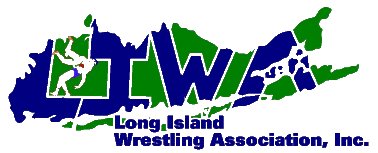
Long
Island Wrestling Association
|
|
|
|
||||||||||||||||||||||||||||||
|
Rope Climbing
Progressions for Wrestling
Grip and pulling strength are two of the most important qualities to develop for
wrestling. Grip and pulling strength is crucial for hand fighting situations,
obtaining wrist control for setting up and finishing takedowns, gaining hand
control for quick stand ups and escapes, and being able to effectively ride your
opponent from the top position. Rope climbing can be used as part of a circuit, before wrestling practice, or part of their strength and conditioning program. Rope climbing can be performed for repetitions, for time or for distance. This article will go over several rope climbing progressions so no matter what the ability level of the athlete they will be able to gain strength and improve their wrestling performance. Some bigger or weaker athletes may have trouble getting up the rope even with the use of their feet. Some of the stronger or lighter guys may be able to climb up the rope multiple times without breaking a sweat.
This is a great way to start athletes out. Have a partner anchor the wrestler with their feet. This exercise can be performed for reps or for time. This exercise can also be performed in a power rack if climbing ropes are not available to your team.
Using the feet in the beginning is a great way to start having athletes actually climb up and down the rope. As the athlete gets more proficient they can start to use less and less lower body to aid in the climb
This is a small progression that is still harder than climbing with just the feet. The athlete can pinch the rope with their inner thigh to give some support while gaining strength attempting to progress to the full climb with no feet.
This is where no lower body is used to assist the climb. As the athlete gets stronger they should start from a seated position to increase the length of the climb. Weaker athlete can jump up to start the climb since they may not be strong enough to climb with no feet for the entire length of the rope.
This is a good advanced progression for advanced rope climbers. The athlete will assume an L-sit position while climbing. This will utilized the muscles of the core and hip flexors in a static fashion. This exercise will help improve core stability as well as increasing the difficulty of a traditional rope climb with no feet.
Many athletes also forget to also climb down the rope. The concentric phase of the movement is when the athlete is climbing up the rope. This part of the movement helps improve strength and power. The eccentric phase is when the athlete is climbing down the rope. By climbing down slowly this increases the difficulty of the movement as well as improve the stability of the muscles in the upper back and grip.
Here is a cool advanced progression if you have two rope close together. You can perform these variations by pulling one hand at a time or both hands at once. Looking for an added challenge? Try performing your next rope climb with pull ups in along your way up the rope! Don't have access to a rope? Due to liability issues many coaches may not have access to high ceiling or climbing ropes at all. Try these bonus exercises. You can perform these exercises by attaching a rope to a weighted sled outside or attach a heavy resistance band to a fixed object such as a pole and then attach the rope to the heavy band. You can perform these for speed and try to go as fast as possible with light resistance or these can be performed heavy for strength.
When performing rope climb variations always error on the side of being more cautious. When in doubt always use an easier variation. You never want to put yourself in a situation where you don't have enough strength to climb down. Spend a few weeks on the lower level progressions and work your way up to the more advanced ones over time. Another tip is to make sure you aren't climbing rope so often that you are tearing any calluses of your hands. Always make sure to take care of your hands to ensure optimal performance. Make sure to
get some rope climbing in your workouts to help improve your grip strength for
this upcoming season. These exercises will help improve your wrestling
performance as well as your performance in the weight room.
To take your wrestling to the next level and ensure this coming wrestling season is your best one ever go to GaglioneStrength.com and e-mail Coach Gaglione for more information on wrestling training.
|